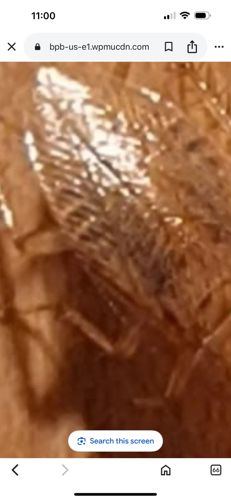Powderpost Beetle (likely an Anobiid or Lyctid)
Scientific Name: Difficult to specify without microscopic examination, but commonly associated genera include 'Anobium' (e.g., A. punctatum) for Anobiidae or 'Lyctus' (e.g., L. brunneus) for Lyctidae.
Order & Family: Order: Coleoptera, Family: Anobiidae (common furniture beetles) or Lyctidae (true powderpost beetles)
Size: Typically 1/8 to 3/4 inch (3-19 mm) in length, varying by species. The exit holes they create are usually very small, from 1/32 to 1/8 inch (0.8-3 mm) in diameter.

Natural Habitat
Infested seasoned hardwoods, including furniture, flooring, structural timbers, antique musical instruments, and crafts made of wood. They prefer wood with a certain moisture content and starch content, often less than 10 years old (for Anobiids) or any age (for Lyctids if conditions are right).
Diet & Feeding
Larvae feed on the starch, sugars, and proteins found in the sapwood of seasoned hardwood. Different species prefer different wood types.
Behavior Patterns
As a type of wood-boring beetle, powderpost beetles infest seasoned hardwoods, creating networks of tunnels as larvae. Adults are short-lived and primarily focused on reproduction. They are typically nocturnal and attracted to light. The presence of fine, flour-like powder (frass) near small, circular exit holes indicates an active infestation. They can reinfest wood year after year.
Risks & Benefits
Risks: Significant economic damage to wooden structures, furniture, and other wooden items. Infestations can spread and compromise the structural integrity of wood over time if left untreated. They do not bite or sting humans and pose no direct health risk. Benefits: None perceived in a human-impacted environment; in nature, they contribute to the decomposition of wood, but their primary impact is as pests.
Identified on: 9/2/2025